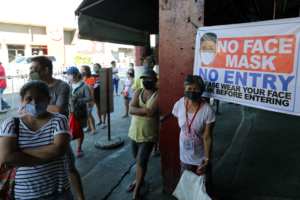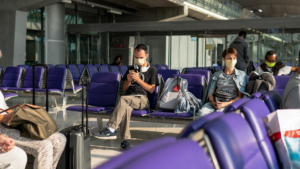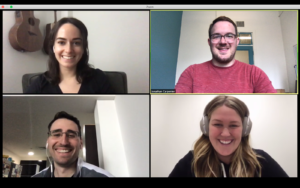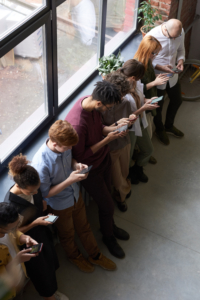The COVID-19 pandemic is a global issue, with its effects seen across demographics, economics, and political lines. While some countries come back online in a measured fashion, there’s speculation of when others will follow suit. We don’t know when we can finally put COVID-19 behind us, but it’s evident that it will have long-term ramifications. Here are four ways COVID-19 will affect life in the future.
Remote working
 In the last few weeks, we’ve seen the biggest corporate experiment ever conducted. Many office jobs shifted to mandatory remote working. This shift has the potential to change the way businesses look at remote working in the future. People with young children became caregivers and educators while managing work as well. But some professionals recognized how much more productive they were. They removed office distractions and used their time as best suits them. Seeing how individuals work outside of the workplace has helped organizations identify who can and can’t work at home. These revelations may change how HR manages people in the future. It will affect how we work, where we work, or who works in the future. It also opens up new opportunities for people to work for any company, regardless of where they might live.
In the last few weeks, we’ve seen the biggest corporate experiment ever conducted. Many office jobs shifted to mandatory remote working. This shift has the potential to change the way businesses look at remote working in the future. People with young children became caregivers and educators while managing work as well. But some professionals recognized how much more productive they were. They removed office distractions and used their time as best suits them. Seeing how individuals work outside of the workplace has helped organizations identify who can and can’t work at home. These revelations may change how HR manages people in the future. It will affect how we work, where we work, or who works in the future. It also opens up new opportunities for people to work for any company, regardless of where they might live.
Public reluctance
 COVID-19 showed how vulnerable our daily lives are to viral exposure. Locations with a steady stream of customers like restaurants, bars, and grocery stores will need to embrace offering services that allow pick-up or delivery. GrubHub, Diner Dash, and UberEats proved their value over the past few weeks and will evolve as a result. But businesses like hair salons, dog groomers, and gyms that provide more individual services are struggling. They need to figure out how to serve clients without risking or spreading potential infections. Crowded venues like sporting events, movie theaters, night clubs, and concerts will need to retool their experiences, too. Look for these places to have limited admittance with distance components built in for extra protection. Another option is adding a virtual component to allow people to have entertainment from the comfort of their own home.
COVID-19 showed how vulnerable our daily lives are to viral exposure. Locations with a steady stream of customers like restaurants, bars, and grocery stores will need to embrace offering services that allow pick-up or delivery. GrubHub, Diner Dash, and UberEats proved their value over the past few weeks and will evolve as a result. But businesses like hair salons, dog groomers, and gyms that provide more individual services are struggling. They need to figure out how to serve clients without risking or spreading potential infections. Crowded venues like sporting events, movie theaters, night clubs, and concerts will need to retool their experiences, too. Look for these places to have limited admittance with distance components built in for extra protection. Another option is adding a virtual component to allow people to have entertainment from the comfort of their own home.
Tentative travel
 The travel industry may be the hardest hit in the coming months. Lower fares, empty hotels and beaches, and impending cabin fever will lure some tourists to venture abroad again. But, the proximity to other people to get to prime destinations will be a difficult hurdle for some. Also, the fear of becoming stranded or ostracized upon return will keep many would-be travelers from venturing out. Finally, Baby Boomers travel more and spend more than their counterparts. With these individuals more at risk, cruises and resorts will need to adjust to accommodate them in a safer way or woo less susceptible guests.
The travel industry may be the hardest hit in the coming months. Lower fares, empty hotels and beaches, and impending cabin fever will lure some tourists to venture abroad again. But, the proximity to other people to get to prime destinations will be a difficult hurdle for some. Also, the fear of becoming stranded or ostracized upon return will keep many would-be travelers from venturing out. Finally, Baby Boomers travel more and spend more than their counterparts. With these individuals more at risk, cruises and resorts will need to adjust to accommodate them in a safer way or woo less susceptible guests.
Zoom boom
 What was a novelty became commonplace for people inside and outside of business. Video conferencing emerged as a clear winner from the pandemic. People everywhere embraced Zoom, Google Hangouts, Facebook Messenger, and other platforms. With them, people have held meetings, conducted classes, or connected without being together. With so many people using this technology, we will see them used more often now. This will diminish business travel, increase distance learning, and create virtual trade shows and summits. This will spur innovation in other events as we leverage and improve the technology.
What was a novelty became commonplace for people inside and outside of business. Video conferencing emerged as a clear winner from the pandemic. People everywhere embraced Zoom, Google Hangouts, Facebook Messenger, and other platforms. With them, people have held meetings, conducted classes, or connected without being together. With so many people using this technology, we will see them used more often now. This will diminish business travel, increase distance learning, and create virtual trade shows and summits. This will spur innovation in other events as we leverage and improve the technology.
Change breeds opportunity
Every business is different by industry, brand, audience, and business models. Life after COVID-19 is sure to change. And each of these changes will impact every business in different ways. But with unexpected change comes unprecedented opportunity to innovate and grow. The victors will be those with the ability to adapt.


